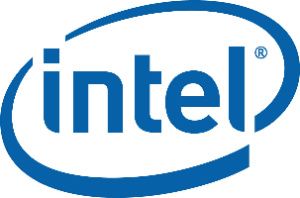Intel has backed its vision for computers that see and hear by dedicating a $100 million investment fund to the venture, and committed its customers to supplying the technology by late 2014.
Intel launched the Intel Capital Experiences and Perceptual Computing Fund on Tuesday, dedicated to spending $100 million to the technology over the next two or three years. In a related announcement, Intel said that it would license SoftKinetic’s issu middleware to add to an existing SDK for perceptual computing.
Intel’s commitment to perceptual computing lags that of Microsoft, which launched a version of its Kinect depth-sensing camera for Windows in 2012. The Kinect camera, originally bundled with the Xbox game console, can also be used in malls, theaters, and other public spaces as a fun way of interacting with large-screen content. Microsoft recently said that it would implement the latest version of its Kinect camera, bundled with the Xbox One, into Kinect for Windows as well. That version boasts recognition features as well as improved skeletal tracking.
In September, Intel outlined a vision of the PC that included a camera from Creative Technologies that could be used to interpret gestures, listen for audio commands, and recognise faces. Creative’s camera, the Senz3D, is still a developer project, Intel said Wednesday, but will be made available to consumers later in the year for an undisclosed price.
Intel said in September that it would launch an SDK to help enable the technology, but so far Intel hasn’t publicly announced any fruits from its labours. The September demos incorporated SoftKinetic technology, now part of the SDK. Intel also said Wednesday that Nuance Dragon Assistant is being bundled with 10 Intel Core-powered notebooks sold by Best Buy, including models by Acer, Asus, Lenovo, and Toshiba.
Intel also said that it is working with multiple OEM partners to integrate 3D depth camera technology into "various Intel based devices" with "targeted availability" slated for the second half of 2014. That doesn’t necessarily mean that Creative will be supplying the technology; so far, Creative’s Senz3D has just been bolted on top of a notebook. Intel also said that facial log-in software from Sensible Vision will ship preloaded from multiple OEMs, allowing the PC to recognise the user and automatically log him or her in.
"Devices with human-like senses – the ability to see, hear and feel much like people do – has long been a subject of science fiction but is now within reach given recent innovations in compute power and camera technology," said Arvind Sodhani, president of Intel Capital and Intel executive vice president, in a statement. "This new fund will invest in start-ups and companies enabling these experiences, helping them with the business development support, global business network and technology expertise needed to scale for worldwide use."
Investment targets will include broader touch applications, imaging, gesture, voice and emotion sensing and biometrics, Intel said.
Other developers, however, have claimed that Intel doesn’t need to go that far to enable laptops that can interpret gestures. PointGrab, an Israeli developer, showed off technology that uses the Webcam built into notebooks to recognise gestures. Windows 8.1 will add support for new gestures, such as hands-free volume controls, Assaf Gad, the vice president of marketing and product, said in an interview Tuesday afternoon. One of those will include a ‘sshh!’ mute gesture where a user touches his lips with an index finger. ‘Air drawing’ will also be included, useful when highlighting elements in a presentation, he said.
PointGrab’s technology is built into newer Samsung TVs, and PCs sold by Acer and Fujitsu. A hands-free app using the iPhone’s camera is also available. Gad said that there were no technical limitations to supplying its technology as a free, downloadable app; however, its business model calls for the company to license its technology to PC makers, he said.
So are hands-free gestures actually useful for anything, in an environment where some consider touch to be superfluous? Gad went back to the hands-free navigation through presentation software. "I don’t think we are a replacement for anything," he said. "We think we are an extension" of existing ways of interacting with the PC.
IDG News Service








Subscribers 0
Fans 0
Followers 0
Followers